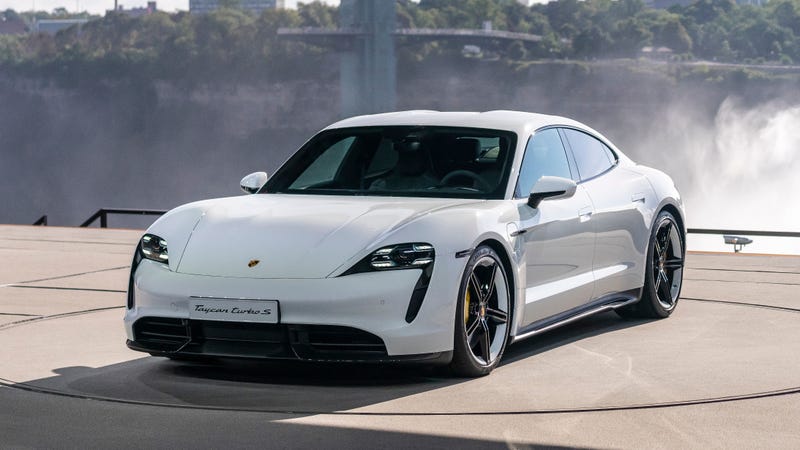
The 2020 Porsche Taycan Turbo and Turbo S debuted this week. Despite its name, it does not include a turbocharger. It can not and it could not. It’s an electric car. Instead, the word “turbo” has taken on a symbolic meaning in the Porsche’s nomenclature. But before you get too mad, let’s remember that the annihilation of the word started years ago, with the Porsche 911.
Things used to be simpler, but Porsche’s lineup has been absurd for a long time. Let’s go back to 1975, when Porsche first introduced the 911 Turbo. Capital “T,” from when this tech was new and novel, the first to be marketed with turbocharger hardware that promised improved performance from the automaker’s motorsport legacy. So good you have to put it on the tin. It was the flagship.
Then the Turbo S came along as a hardcore, limited run enhanced performance package version of the Turbo, usually sold near the end of a generation’s life cycle to push the current car to the edge of its ability before clearing way for the all-new next generation.
Advertisement
But then, in the late 1990s, the automaker started fucking around. The Turbo S became a much more prominent and prominently marketed flagship model for the 911 range, instead of a somewhat-rare package option.
As my coworker Raph once put it, Porsche was now selling the Turbo S as the flagship, which meant it was intentionally holding back on the regular Turbo model’s performance to leave room for something faster and more expensive. It was all mostly marketing, but it turned the 911 into the Turbo S and the Turbo Shitty, as Raph so eloquently noted.
Advertisement
But that wasn’t so bad, because those cars were still the turbocharged models. Turbo meant there was forced induction hardware, where the lesser Carrera models weren’t forced to do anything but sing.
Advertisement
But then in 2015, Porsche introduced the 991.2 generation, an update on the 2012 911. The big change was that every 991.2 911 now had a turbocharger, whether it said Carrera or Turbo on the back.
The word Turbo no longer made the distinction that the car featured something that the others didn’t. “Turbo,” in regards to Porsche, now took on an ambiguous marketing meaning to make the distinction that this car is faster and more expensive than that car, and you should stop thinking about it. As of 2015, “Turbo” was a signifier of speed not tech, just like on your blender.
Advertisement

It went from being about the engineering to being all about the nomenclature, at the laziness and benefit of the marketing team.
Advertisement
Porsche is not a company that goes for big change often. Sure, it’s added new models in new segments over the years, but ultimately it’s best known for building the same car, with the same styling, and the same handling characteristics, for over 60 years.
So none of us should be shocked that a company of German executives, in a market forcing change upon them, will white-knuckle-clutch whatever they know works and can rely on to mitigate risk, like the “Turbo” trim designation, even if it doesn’t make sense.
Advertisement
In the electric Taycan’s case, and in the eyes of Porsche, labeling an electric car with “Turbo” and “Turbo S” to match the nomenclature for its other models is logical. To them, it’s no different than Nissan labeling the electric Leaf trims “S” and “SV” to match the Versa’s trim designations.

Advertisement
But to any sane, rational person, it doesn’t make any sense. Porsche, in engineering an advanced, all-new model in a new segment with a revolutionary powertrain, has blinked at the finish line, somehow still fearful of fully committing to change and holding on to whatever part of its past it can still justify, while half-heartedly waving the flag of progress.
Even if it’s in total ignorance of the Taycan’s achievements, and ultimately undercuts what’s supposed to be the point of the damn thing: letting go and trying something new.













